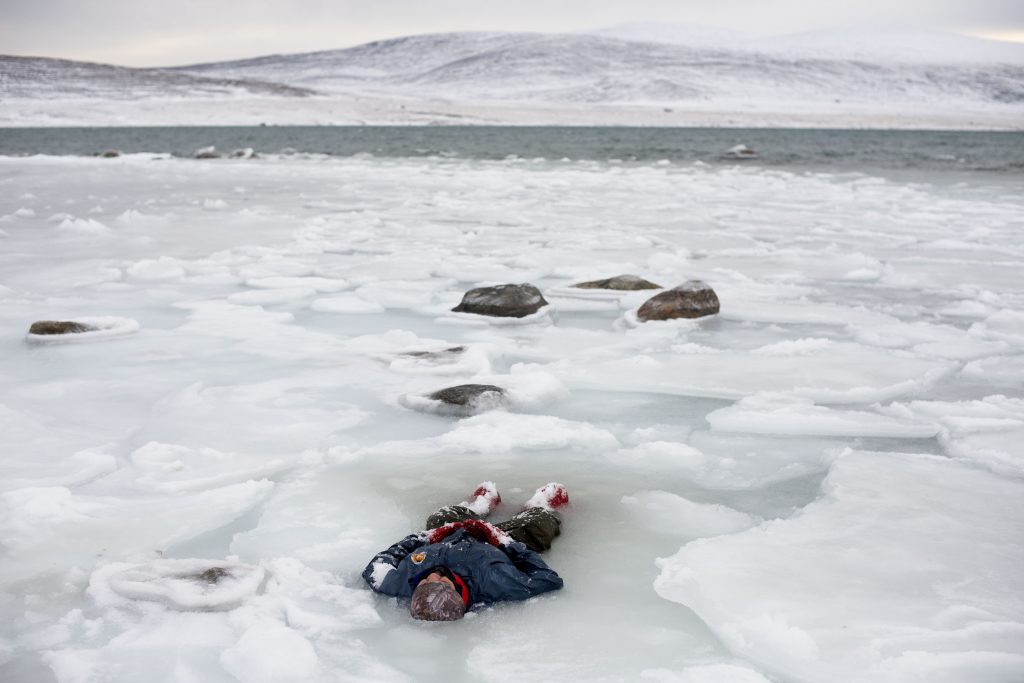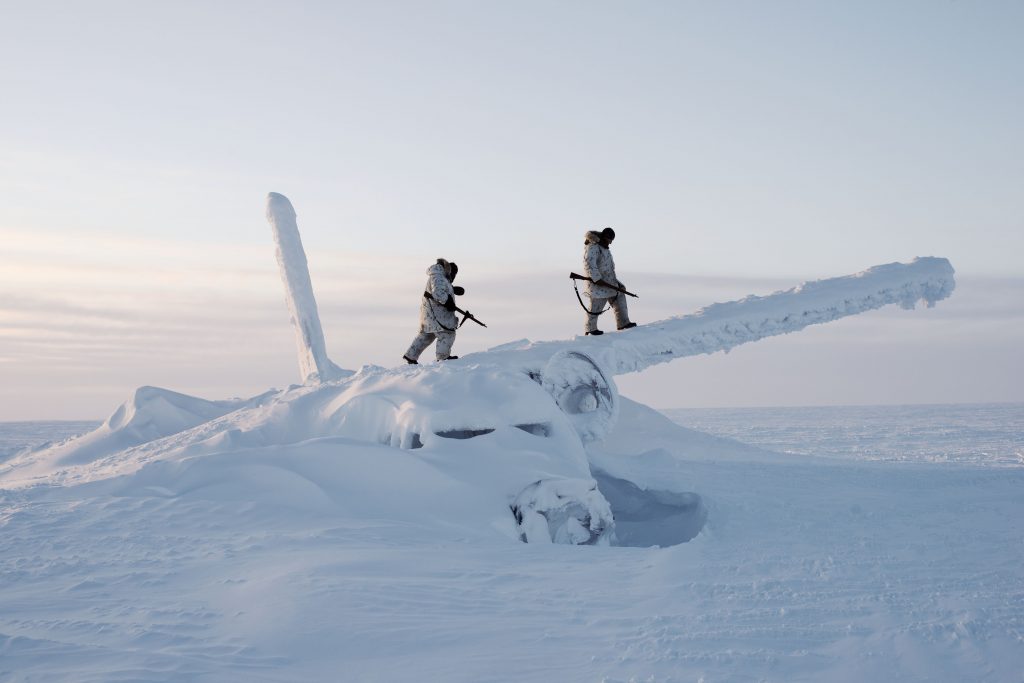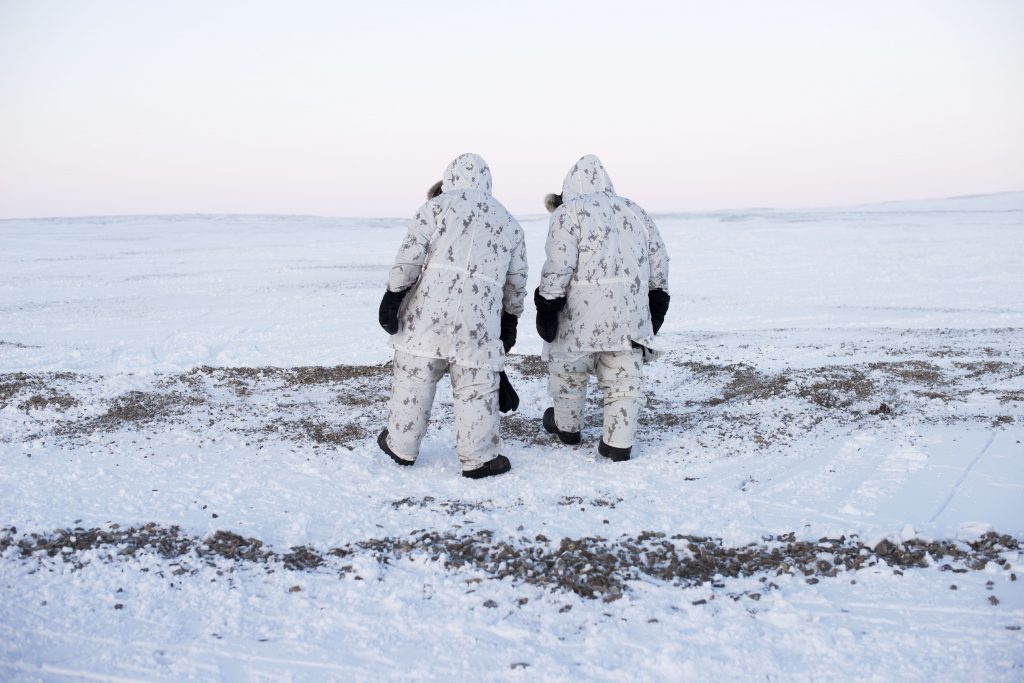Distant Early Warning, a multi-year project (2015-2018) by Canadian/American photojournalist Louie Palu, provides a look at the evolving militarization in the North American Arctic driven by invented narratives and imagined threats. Now, decades after the end of the Cold War, debates have emerged over more efficient shipping routes, opportunities for resource extraction and the future of the Arctic related to climate change. Along with the six other Arctic nations (Finland, Greenland (Denmark), Iceland, Norway, Russia, and Sweden), the United States and Canada are maneuvering to assert and defend their claims over the territory. Consequently, some Indigenous communities in the region are slowly coming face to face with increased geo-political activity and tourism. This exhibition examines operations of power and bears witness to a culture of fear and hyper-preparedness as we brace for an unknown future.
Palu’s work was supported by funding from the John Guggenheim Memorial Foundation, National Geographic Magazine, and Pulitzer Center. The presentation of this exhibition is supported by a project grant from the Baltimore County Commission on the Arts & Sciences and an arts program grant from the Maryland State Arts Council, an agency funded by the State of Maryland and the National Endowment for the Arts. Additional support comes from the Libby Kuhn Endowment Fund, as well as individual contributions.

Public Programming
Participatory Installation & Panel Discussion: Geopolitics and Geology in the Arctic
Monday April 4, 2022 at the AOK Library Gallery
Installation: noon-5pm
Panel discussion: 5pm
Free and open to the public, reception to follow
Ice block installation by Louie Palu at SXSW at the Harry Ransom Center in 2019. Photo © Louie Palu
Once considered nearly impenetrable, the Arctic is losing roughly 21,000 square miles of ice each year and warming faster than any other place on the planet. As climate change melts its icy armor, the region is taking on strategic importance. This panel discussion explores contemporary geopolitics and geology in the Arctic from a variety of artistic, scholarly, and scientific perspectives. Topics include: new scientific methods for measuring and analyzing the influence of sea ice thickness on the climate, the future of national competition and claims over the Arctic, and impact of climate change on the indigenous communities in the region.
Join us before the panel discussion for a participatory installation of photographs from Distant Early Warning encased in blocks of ice in the plaza outside the Albin O. Kuhn Library and in a hands-on display in the Library Gallery.
Panelists:
Louie Palu (bio below)
Dr. Nathan Kurtz is the Chief of NASA’s Cryospheric Sciences Laboratory, Deputy Project Scientist for NASA’s ICESat-2 satellite mission, and UMBC alum (PhD Atmospheric Physics, 2009). His research involves remote sensing of the polar regions with an emphasis on the use laser and radar altimetry data to study the impact of sea ice on the climate. He has traveled to both the Arctic and Antarctic numerous times as part of ship-based and airborne field campaigns.
Dr. Brian Grodsky is a Professor of Comparative Politics and Chair of the Political Science Department at UMBC. His research interests include various aspects of democratization and human rights, as well as the politics of disaster response and climate change. His books include, The Costs of Justice (University of Notre Dame Press 2010); Social Movements and the New State: The Fate of Pro-Democracy Organizations When Democracy is Won (Stanford University Press 2012); and The Democratization Disconnect (Rowman & Littlefield, 2016).



Louie Palu is a photographer and filmmaker whose work has examined social political issues, such as human rights and conflict for over 30-years. He is a 2016 Guggenheim Foundation Fellow and was awarded the 2019 Arnold Newman Prize for New Directions In Portraiture. His work has examined topics such as the war in Afghanistan, Guantanamo Bay, drug war in Mexico and changing geopolitics of the Arctic. His last four publications deal with how narratives can be reshaped by changing the sequence of images including in his deconstructed book Front Towards Enemy (2017, Yoffy Press). His work has appeared in National Geographic Magazine, The New York Times, The Washington Post Magazine, BBC, The Guardian, Der Spiegel and El Pais. His work is held in numerous collections including the Museum of Fine Arts Boston and National Gallery of Art. His films have been broadcast internationally and screened at numerous festivals including the Munich and Barcelona Documentary Film Festivals.
Virtual Artist’s Talk: Louie Palu
5:00 pm (EST)
February 22, 2022
Register here (via Webex)


